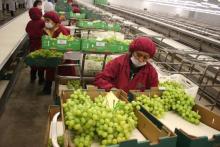
One of the most ambitious projects of its kind is close to taking shape. If achieved, wind power in La Guajira could become (as always hoped) a driving force of the energy transition.
Ecopetrol signed an Investment Framework Agreement (IFA) with AES Colombia to participate in the Jemeiwaa Ka'I wind project, one of the largest clean energy initiatives in the hemisphere.
The name, which in the Wayuunaniki language evokes "the power of the wind," now also represents a historic shift for the oil company in its entry into large-scale wind power generation.
The initiative has been brewing for years in the technical offices of Bogotá and on the still sands of Uribia.
If legal and technical conditions are met, Ecopetrol will acquire a 49% stake in a portfolio of six wind farms (JK1 to JK6), with a total capacity of 1.1 gigawatts.
A figure equivalent to the average consumption of nearly one million Colombian households.
In a country that still relies heavily on hydroelectric (more than 60%) and thermoelectric plants, the project alone could provide 5.2% of the country's daily demand (222.65 GWh, according to the latest report from XM).
The development investment, not yet fully disclosed, is already approaching US$70 million in preliminary stages alone, according to AES Colombia.
The project, more than just windmills, would be part of the country's new energy axis. For years, La Guajira has been a land of unfulfilled promises in this area of projects, whether due to issues with communities or difficulties within the country's legal framework.
A task that the Energy and Gas Regulatory Commission (CREG) has been focusing on since 2021.
With Jemeiwaa Ka'I, the picture is beginning to change. The wind cluster will be built in the upper and middle Guajira region, specifically in the municipality of Uribia, and also includes a 35-kilometer transmission line to connect the energy produced to the rest of the country.
The electricity generated will be used in part to supply the National Interconnected System and in part to produce green hydrogen, the fuel of the future that promises to decarbonize entire industries.
According to industry estimates, capital recovery is projected to take 7 to 8 years, a reasonable timeframe for this type of infrastructure.
But there are conditions. The operation depends on the progress of the construction of the Colectora, an essential infrastructure for transporting energy from La Guajira to the center of the country.
The project is currently facing delays due to environmental procedures, although it is expected to be completed in a similar timeframe to the parks: 18 to 24 months, supported by the Bogotá Energy Group.
For AES Colombia, Ecopetrol's entry is a way to financially secure the project and speed up its progress. For Ecopetrol, however, it is a political and survival signal.
The state-owned company has been transforming its business model in response to global pressure to abandon fossil fuels. The state-owned oil company's goal is to reach 1,000 MW of clean, renewable energy by 2030.










